Introduction
In a world where safety and stability are paramount, non-slip adhesive pads have emerged as a game-changer. These friction devices, also known as sticky pads, are designed to prevent objects from sliding on surfaces, ensuring safety and stability. From car dashboards to manufacturing plants, their application is vast and varied. This article delves into the magic of non-slip adhesive pads, exploring their importance, the different types available, and how to choose the right one for your needs. We will also look at their common applications in homes, workplaces, and public spaces, highlighting their role as an ultimate safety solution.
Understanding Non-Slip Adhesive Pads
Non-slip adhesive pads, also known as sticky pads, are friction devices designed to prevent objects from sliding on a surface. They increase the friction between the object and the surface, effectively keeping the object in place. Unlike fasteners or adhesives, sticky pads don't affix objects to the surface but prevent them from slipping until a certain threshold of acceleration or inclination is exceeded. Made from rubber-like materials, these pads are easily detached from the surface and require gravity to function effectively. They are commonly used on car dashboards and other smooth surfaces.
The Importance of Non-Slip Adhesive Pads
Liability is a serious concern in the workplace, and slips and falls are major causes of injuries. Despite proper training and education, human error and accidents are always possible. Anti-slip materials, such as non-slip adhesive pads, are designed to reduce these injuries and prevent equipment damage. Made from sturdy layers of plastic or rubber, they prevent unwanted movement of people or objects, ensuring safety and stability. They are particularly crucial in environments like manufacturing and warehouses, transportation, and where electronic equipment is used.
Different Types of Non-Slip Adhesive Pads
Non-slip adhesive pads come in various types, each designed to cater to specific needs. Foam non-slip pads, such as 7# Black Vinyl Foam and 15# Black Vinyl Non-Slip Foam, both with adhesive backing, offer grip and security. Sponge anti-skid materials like Closed-Cell Neoprene Sponge and Black High-Density-Urethane Sponge provide pressure-sensitive adhesion. Vinyl anti-skid materials, such as PEV .030-Thick High-Density Black Vinyl and TEV .045-Thick High-Density Black Vinyl, both with embossed surfaces and adhesive backing, offer high density and durability. Anti-skid rubber materials like Neoprene 50 Durometer and 3M™ Resilient Rollstock™ provide resilience and durability.
Rubber Pads
The Self-Adhesive Rubber Bumper Pads Variety Combo Pack offers top quality rubber bumpers in various shapes like cylindrical, hemispherical, square, recessed, and conical. These non-skid rubber bumpers serve as sound dampeners for cabinet doors, pads for drawers & picture frames, feet for cutting boards, and more. They are easy to peel and self-stick, non-skidding, and non-marring, available in clear, black, white, brown, and gray colors.
Foam Pads
Non Skid Foam Pads are a type of non-slip adhesive product. They are coated on one side with a high tack permanent adhesive. These pads are particularly useful for counter mats or on the bottom of displays to prevent slippage. They offer a reliable solution to enhance safety and stability.
Silicone Pads
Silicone Pads, specifically the 10-pack Removable Silicone Sticky Anti-Slip Gel Pads, are versatile and practical. Made from PU gel, these pads can stick to various surfaces like car dashboards, glass, mirrors, metal, tile walls, and kitchen surfaces. They can hold items like phones, keys, and even pet bowls. The pads are easy to use: clean the surface, remove the protective film, stick the pad, and press hard for 5 seconds. If they get dusty, simply wash them with water. However, for heavy objects or surfaces with complex shapes, multiple pads may be needed. Avoid using on paper, delicate, rough, or granular surfaces, and do not expose to direct sunlight for long periods.
Choosing the Right Non-Slip Adhesive Pads
Choosing the right non-slip adhesive pads involves considering several factors. The application area is crucial; for instance, some tapes are designed for barefoot areas like swimming pools, while others are ideal for irregular surfaces like checker plates. The material's durability, such as resistance to UV, mud, or oil, is another consideration. Some tapes can even be painted without losing friction properties. Finally, consider the size and shape of the tape, as some can be custom cut to your requirements.
Considerations for Size and Shape
When choosing non-slip adhesive pads, size and shape are crucial considerations. The pad should be slightly smaller than the object it's adhered to, ensuring it remains hidden and prevents slipping. For instance, if you're applying it to a 9' x 11' area rug, the right pad size would be 8'10" x 11'10". This sizing prevents tripping hazards and premature wear. The thickness of the pad also matters, varying from 1/16" to 1/2" depending on the application. Always measure and mark your ideal dimensions before cutting any pad to size to avoid mistakes.
Material Suitability
The non-slip adhesive pad in focus is made from export-grade silicone, featuring strong adhesive backing. This material allows the pad to be cut into any shape as needed, providing flexibility and convenience. It maintains its properties even at high temperatures and offers good electrical insulation. This silicone-based non-slip adhesive pad is not only suitable for furniture legs but also for various surfaces like floors, tiles, refrigerators, washing machines, beds, chairs, dining tables, and carpets. It effectively prevents slipping while protecting surfaces from scratches and noise.
Durability and Maintenance
The durability of non-slip adhesive pads is closely tied to their maintenance. Proper care can extend their lifespan significantly. For instance, ensuring moderate temperature during use, keeping the surface clean and dry, and cutting right angles into rounded corners can prevent easy wear and tear. It's also crucial not to touch the adhesive side to maintain its stickiness. After application, roll over the tape with a rubber wheel for tight bonding and wait for 24 hours before use. These steps can help maintain the durability of non-slip adhesive pads, ensuring they last longer.
Installation and Usage of Non-Slip Adhesive Pads
Installing non-slip adhesive pads is a straightforward process. First, ensure the surface is clean and dry. Position the pad on the surface, making sure it's in the desired location. Once positioned, attach the pad to the surface, applying pressure to ensure it adheres properly. Maintenance involves regular cleaning to keep the pad effective. If you need to remove the pad, it can be done without leaving any residue.
Common Applications of Non-Slip Adhesive Pads
Non-slip adhesive pads, also known as anti-skid mats, are versatile safety solutions used in various settings. In industrial environments, they're essential in manufacturing plants dealing with liquids, food processing factories, and offshore oil platforms. They provide traction on ladders and stairs. Public areas like boat decks, gym floors, restaurant kitchens, and outdoor stairs also benefit from these pads. For personal use, they're ideal for bathrooms, house decks, and even as cell phone traction pads on car dashboards. These applications highlight the importance of non-slip adhesive pads in preventing accidental slips and falls.
In Homes
Non-slip adhesive pads, also known as anti-skid pads, are essential for furniture in homes. They are often used on dining room and kitchen chairs to protect flooring, and are incredibly effective in living rooms with hardwood floors. These pads provide a protective barrier between the floor and the furniture legs, reducing the potential for damage. They also increase safety by keeping furniture in place, making them a valuable addition to any home.
In Workplaces
Non-slip adhesive pads, like Dycem's self-adhesive range, are essential in workplaces. They can be used to increase the gripping properties of various surfaces. For instance, self-adhesive strips can provide a secure grip on DIY tools such as hammers or screwdrivers. Self-adhesive panels, flexible and easy to cut to size, can be placed on desks or workshop benches for added stability. Small and discrete self-adhesive discs are perfect for securing office equipment like keyboards, phones, and printers, providing a secure non-slip base. These adhesive pads are a perfect solution for a more permanent non-slip surface in the workplace.
In Public Spaces
Public spaces often present a risk of slips and falls, especially on wet surfaces. Non-slip adhesive pads, similar to grip tape, can significantly increase safety in these areas. They are durable and feature a textured surface for excellent slip prevention in all weather conditions. However, for areas where people often go barefoot, like pool sides or boat decks, a gentler texture made of dimpled plastic is more suitable. It's crucial to choose non-slip pads that are waterproof, mold- and mildew-resistant for outdoor use, ensuring a long-lasting grip without slipperiness or staining.
Conclusion
Non-slip adhesive pads have proven to be an indispensable safety solution in various settings. Their ability to increase friction and prevent slips and falls makes them a crucial addition to homes, workplaces, and public spaces. The variety of types available caters to specific needs, offering grip, security, and durability. Choosing the right pad involves considering factors like application area, material durability, and size. Proper installation and maintenance can extend their lifespan, ensuring they continue to provide safety and stability. Whether it's preventing a cell phone from sliding off a car dashboard or ensuring a secure grip on a wet boat deck, non-slip adhesive pads are indeed a magical safety solution.


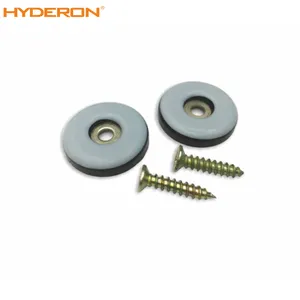

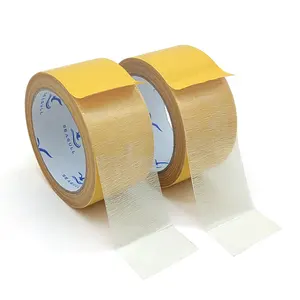

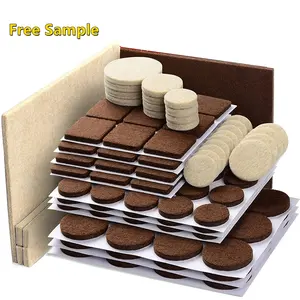



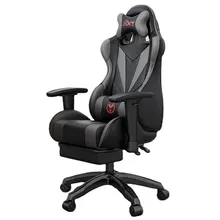





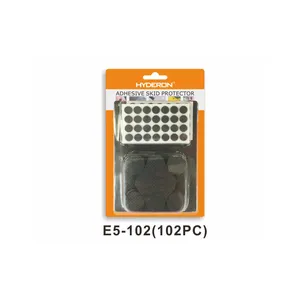

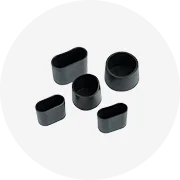
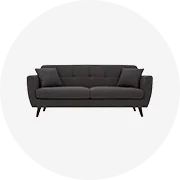
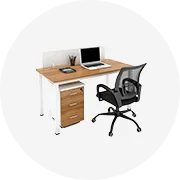
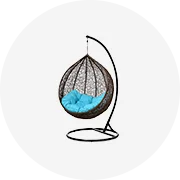
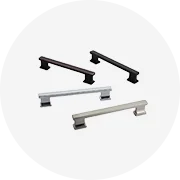
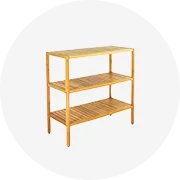
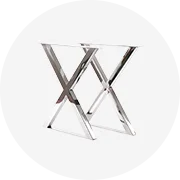
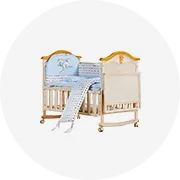








 浙公网安备 33010002000092号
浙公网安备 33010002000092号 浙B2-20120091-4
浙B2-20120091-4